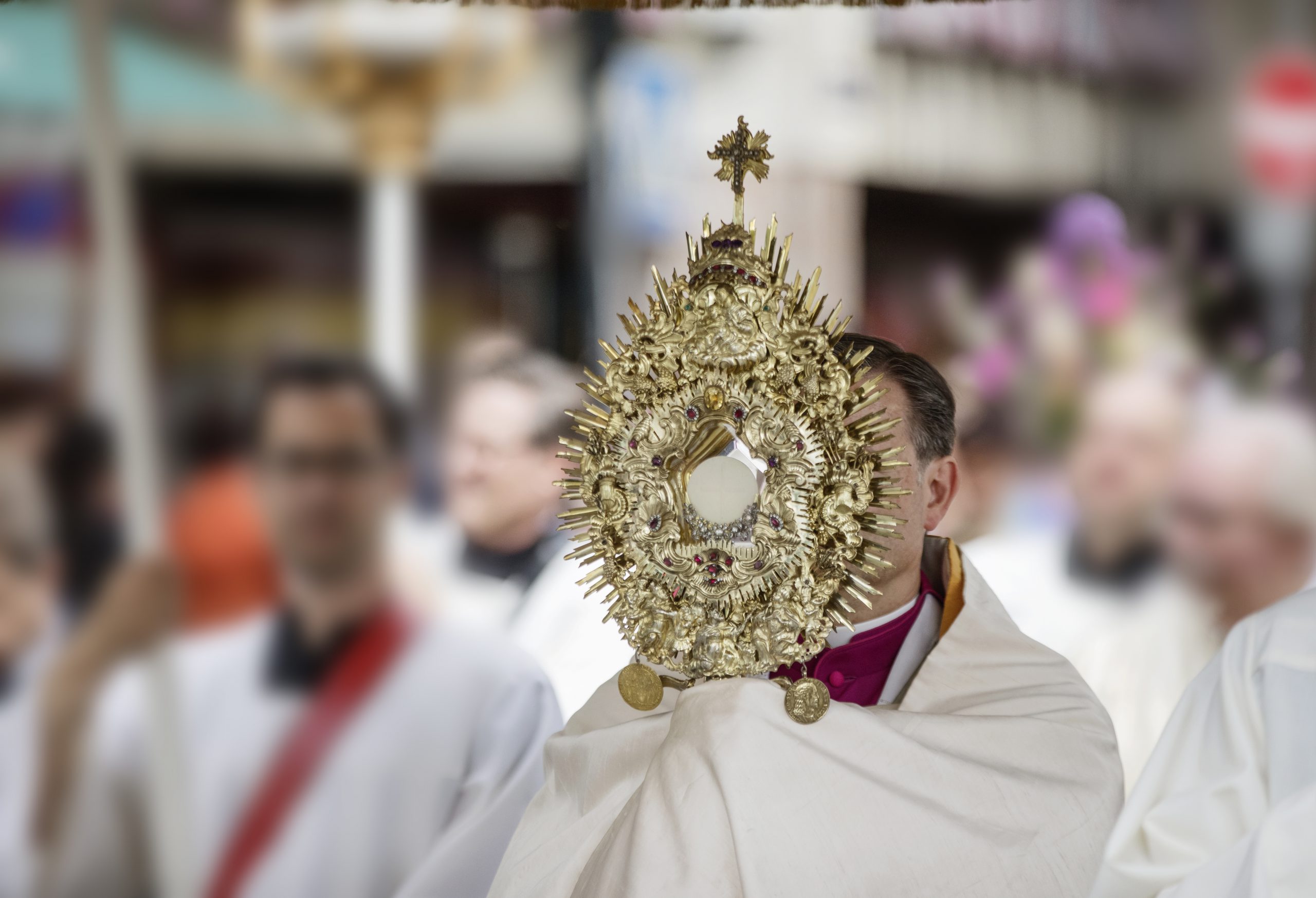Among the many glorious feast days of our Catholic faith, Corpus Christi is arguably one of the richest! This is so because of what we’re celebrating — namely, the Body and Blood of Jesus Christ. The Eucharist is the “source and summit of the Christian life” (Catechism of the Catholic Church, No. 1324). It is also so because of the circumstances that led to the proclamation of the feast, which involved a nun, a priest, a bishop and a Eucharistic miracle.
St. Juliana of Liège (in Belgium) was a nun who had a deep devotion to the Blessed Sacrament. After Jesus gave her a mission through visions, she set out to make the church recognize a special feast for the Body and Blood of Christ. But how? She was a nun in the middle ages without any power or influence. Enter Father Peter of Prague. He was wrestling with the debate at the time about just how real the Real Presence was. His doubts were quelled when he was celebrating Mass and blood began seeping from the consecrated host. Father Peter brought this miracle to the bishop, who was also aware of St. Juliana’s visions. That same bishop soon became Pope Urban IV, who proclaimed the feast of Corpus Christi to the whole Church.
The pope sought the assistance of none other than St. Thomas Aquinas to write the feast’s liturgical text and hymns. Some of the hymns sung at Benediction (Tantum Ergo and O Salutaris Hostia) are the result of Thomas’ efforts. We celebrate Corpus Christi on the Second Sunday after Pentecost.
Central to the feast is the call to Catholics to express love of the Eucharist to the world, to “proclaim on the housetops” (Mt 10:27) what the apostles came to know at the Last Supper. This is why the Eucharistic procession is the hallmark of celebrating the feast of Corpus Christi (June 14 this year). Following the guidelines set forth, many dioceses or individual parishes host Eucharistic processions that go blocks or even miles, with the faithful following Jesus through the streets singing, chanting or praying. If there is a procession near you, by all means bring the family and take part! It’s an amazing experience.
If you can’t get to a procession, you can still celebrate this beautiful feast, by breaking bread with your family, literally. At your family meal, pass the bread around the table and, as each family member takes a piece, have them tell what they remember about their first Communion and what the Eucharist now means to them.
A family trip to Eucharistic Adoration is another way to proclaim belief in the Real Presence. Even if you can’t make a whole hour, perhaps because you have little ones, spending a few minutes in front of the Blessed Sacrament and talking about how Jesus is truly there can make a big impression on little children.
However you choose to recognize this miraculous feast, promise your humble author one thing: Don’t tell my husband that waking up early to make Belgian waffles for the family isn’t part of the official celebration!
Michelle Schroeder is a working mom of two teens and author of The Handy Little Guide series for OSV.



